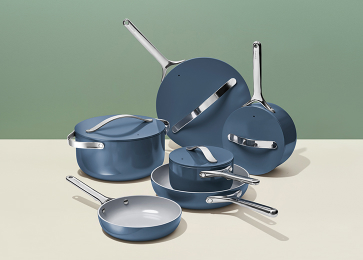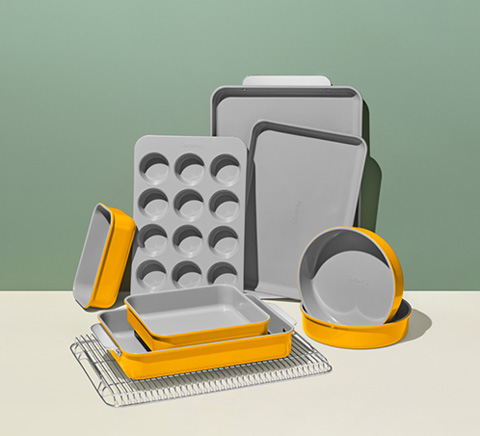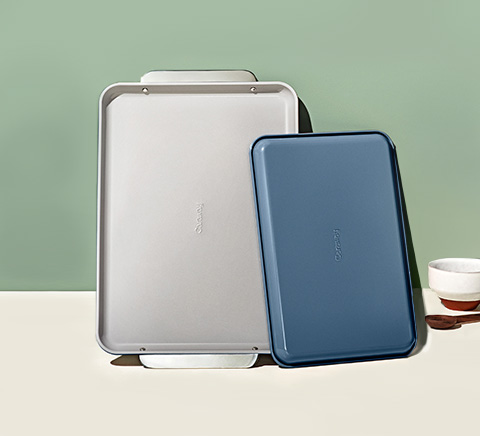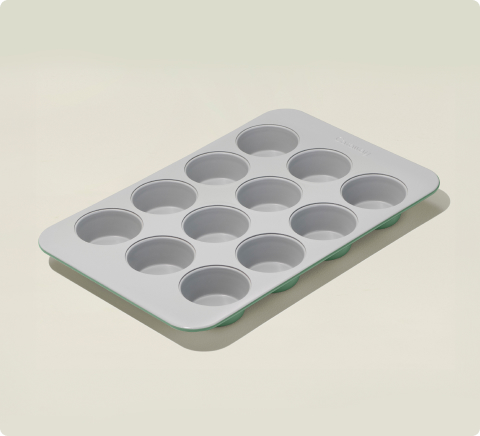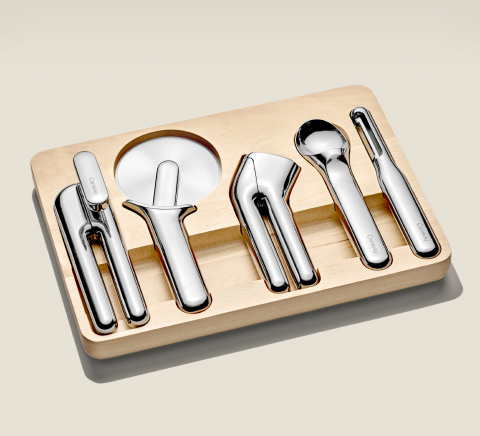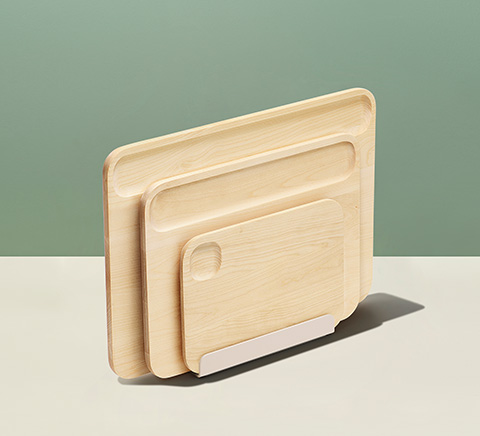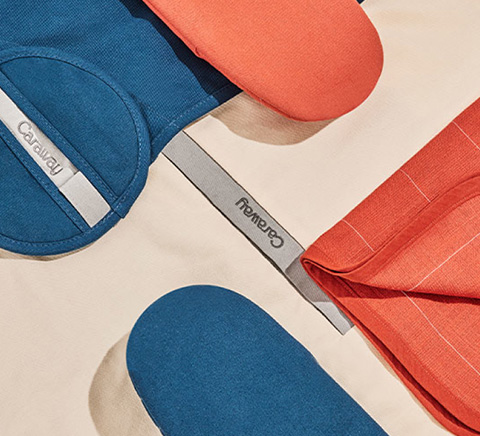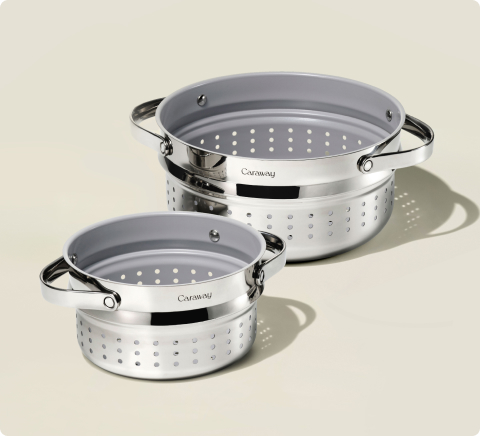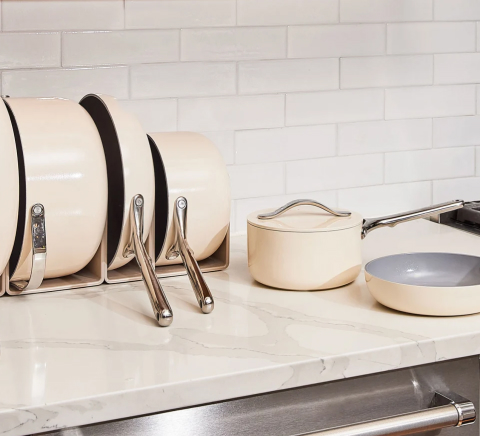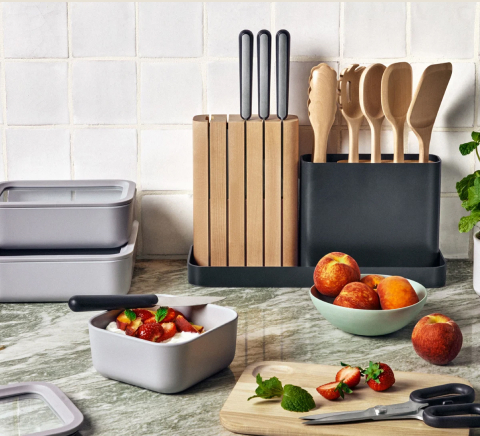Welcome to the ultimate guide on cooking a fantastic steak in an Enameled Cast Iron Skillet. Cooking steak in an enameled cast iron skillet is simple, straightforward, and considered by many chefs to be the best way to get a perfectly seared, juicy, and flavorful piece of meat every time.
With this guide, you'll learn why enameled cast iron is the superior choice for cooking steak, what cuts work best, and the step-by-step process to make sure your steak comes out perfect.
Why Should You Cook Steak Using Enameled Cast Iron?
The equipment you use is just as important as the quality of the meat when you're cooking steak. Enameled cast iron skillets are the gold standard for a reason.
Here's why:
Evenly Distributes Heat
One of the biggest advantages of enameled cast iron is its ability to evenly distribute heat.
Enameled cast iron heats uniformly across its surface, unlike other materials with hot spots. This means your steak will cook consistently from edge to center, giving you that perfect pink interior and a beautifully caramelized crust.
Superior Searing
Enameled cast iron retains heat exceptionally well, making it perfect for achieving a superior sear. This sear locks in juices and enhances the flavor, giving your steak that delicious, savory taste you crave.
Naturally Slick
Enameled cast iron gives you all of the benefits of traditional cast iron and the convenience of an easy-to-clean, naturally slicksurface. Traditional cast iron skillets require regular seasoning to maintain their non-stick properties, but our enameled cast iron takes away that hassle.
There's no need to season it---just cook, clean, and enjoy. This makes it a fantastic choice if you want the performance of cast iron without maintenance.
Less Oil
Using less oil makes your meal healthier and allows the natural flavors of the steak to shine through. Enameled Cast Iron requires minimal oil, which can help reduce your calorie intake and keep your heart healthy. Plus, by using less oil, you let the quality of the meat speak for itself, allowing its natural flavors to take center stage.
What Are the Best Steak for Enameled Cast Iron Skillets?
Choosing the right cut of steak helps you get the best results with your enameled cast iron skillet.
Here are some top choices that we always count on for incredible flavor
Filet Mignon
Known for its tenderness, this cut is perfect for a special occasion. Filet mignon is cut from the smaller end of the tenderloin, a muscle that does very little work, making it incredibly tender.
It's also lean, with a subtle flavor that pairs beautifully with a variety of seasonings and sauces. Because it's so tender, it's best cooked quickly over high heat, making an enameled cast iron skillet the perfect tool.
Ribeye Steak
Rich in marbling, ribeye is incredibly flavorful and juicy. The marbling, or intramuscular fat, melts as the steak cooks, basting the meat from the inside and adding a rich, beefy flavor.
Ribeye is often considered the king of steaks because of its tenderness and flavor. The high heat retention of an enameled cast iron skillet helps render the fat, creating a juicy, flavorful steak with a perfect crust.
New York Strip Steak
The New York strip is a popular choice because it balances tenderness and flavor. It's cut from the short loin of the cow and is known for its fine grain and robust flavor.
It has a good amount of marbling, which adds flavor but is leaner than a ribeye. This cut is perfect if you want a steak that is both tender and flavorful. Cooking it in an enameled cast iron skillet helps to develop a beautiful sear on the outside while keeping the inside juicy and tender.
Sirloin
Leaner but still full of flavor, sirloin is great for everyday cooking. Sirloin comes from the back of the cow, near the hip, and is a bit leaner than the ribeye or New York strip.
It has a bold, beefy flavor and a slightly firmer texture. While it might not be as tender as the filet mignon or ribeye, it's still a fantastic cut, especially for those who prefer a leaner steak. The enameled cast iron skillet helps to give it a good sear and enhances its natural flavors.

How Do I Prepare an Enameled Cast Iron Skillet?
Preparing your enameled cast iron skillet correctly is crucial for achieving a perfect steak.
Here's how to do it:
Cleaning
Enameled cast iron makes cleaning a breeze. Unlike traditional cast iron, there's no need for special care. Just wash it with warm, soapy water and dry it thoroughly with a clean rag or paper towel.
This ease of cleaning makes it more convenient to use regularly. The enameled surface prevents rust and eliminates the need for seasoning, which means you spend less time maintaining your skillet and more time enjoying incredible steak.
You Need a Hot Skillet
Preheating your enameled cast iron skillet is the first step after you have a clean pan. Place it on medium-high heat for up to five minutes until it's hot. This ensures an even sear on your steak.
Preheating the skillet allows the entire cooking surface to reach the desired temperature, which helps achieve a consistent sear. It also ensures that the steak starts cooking the moment it hits the pan, which is essential for developing that perfect crust.
Adding Oil
Because it's enameled cast iron, you don't need much oil. Here's a quick guide on different types of oil:
-
Olive Oil:
-
Pros: Adds a subtle, fruity flavor and has a host of health benefits.
-
Cons: Lower smoke point, so be cautious with high heat.
-
Avocado Oil:
-
Pros: High smoke point, neutral flavor, and considered a healthy cooking oil.
-
Cons: Can be more expensive.
-
Canola Oil:
-
Pros: High smoke point, affordable.
-
Cons: Less flavor.
Choosing the right oil matters because it can affect the flavor and cooking process of your steak. Oils with high smoke points, like avocado and canola oil, are ideal for high-heat cooking, while olive oil adds a nice flavor but should be used with care to avoid burning.

How Do I Cook an Enameled Cast Iron Steak?
Now that your skillet is prepped, let's get cooking. Follow these steps to cook the perfect enameled cast iron steak:
Season Your Steak
Generously season your steak with kosher salt, black pepper, and any fresh herbs you like. This is where you can get creative.
Sea salt helps draw out the meat's natural flavors, while black pepper adds a bit of heat. Fresh herbs like rosemary, thyme, or garlic can be added for extra flavor. Rub the seasoning into the steak and let it sit for a few minutes to absorb the flavors.
Bringing to Room Temperature
Let your steak sit at room temperature for about 30 minutes before cooking. This ensures even cooking.
Cooking a steak straight from the fridge can lead to uneven cooking, with the outside cooking faster than the inside. Allowing the steak to come to room temperature helps it to cook more evenly, resulting in a better texture and flavor.
Searing
Place steaks in the hot pan. Sear each side for about two to three minutes until a nice crust forms.
Avoid moving the steak around too much---let it sit and develop a beautiful sear. The searing process is essential for locking in juices and creating a flavorful crust. Use tongs to flip the steak, ensuring each side gets an even sear.
Doneness
Use a meat thermometer to check the internal temperature. We always recommend an instant-read thermometer to get the quickest and most accurate results.
Here's a quick guide depending on your desired doneness:
-
Rare Steak: 125°F
-
Medium Rare Steak: 135°F
-
Medium Steak: 145°F
-
Medium Well Steak: 150°F
-
Well Done Steak: 160°F
5. Basting
For extra flavor, baste your pan-seared steak with unsalted butter and fresh herbs like rosemary or thyme during the last minute of cooking. To baste, tilt the skillet slightly and use a spoon to scoop up the melted butter and herbs, then pour it over the steak.
This adds richness and enhances the flavors. Basting not only adds flavor but also keeps the steak moist and juicy.
What To Serve With Enameled Cast Iron Skillet Steak
A great steak deserves equally great sides. Consider serving your enameled cast iron steak with:
-
Roasted Vegetables: Simple and flavorful, roasted vegetables complement the rich taste of the steak. Try carrots, Brussels sprouts, or bell peppers roasted with a bit of olive oil, salt, and pepper.
-
Mashed Potatoes: Creamy and comforting, mashed potatoes are a classic steak side. Add some garlic and butter for extra flavor.
-
Steamed Asparagus: Light and healthy, asparagus adds a fresh contrast to the hearty steak. Simply steam and season with a bit of salt and lemon juice.
-
Garlic Bread: Perfect for soaking up any juices, garlic bread is delicious and easy to make. Toast some bread with garlic butter and parsley.

The Bottom Line
Cooking steak in an enameled cast iron skillet is a foolproof way to achieve restaurant-quality results at home. With the right preparation and technique, you can enjoy a perfectly cooked steak that's juicy, flavorful, and absolutely delicious.
Sources:
14 Types of Fresh Herbs and How to Cook With Them | Epicurious
Effect of Dietary Intake of Avocado Oil and Olive Oil | PMC
Safe Minimum Internal Temperature Chart | Food Safety and Inspection Service
